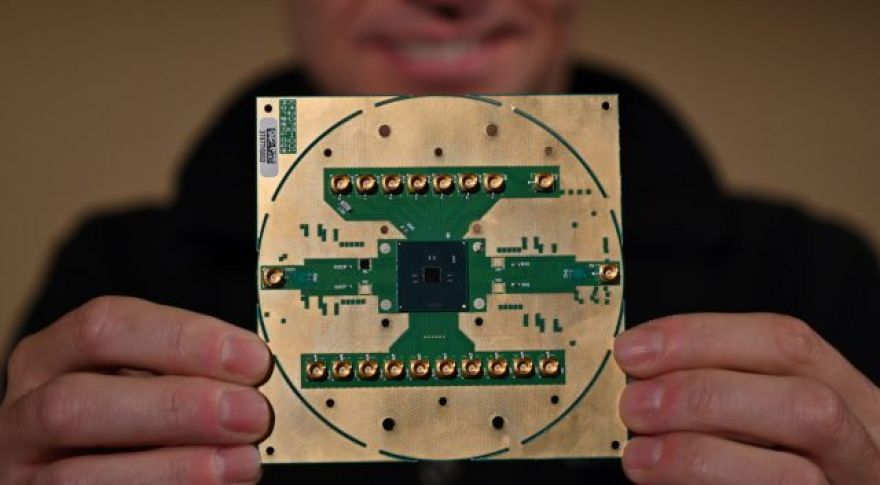
Intel to Speed Up Quantum Computers With Cryogenic Chip
Over the past few months, IBM and Google have released competing claims and announcements about various quantum projects each has in the works, including Google’s claim to have achieved a real-life world first with a demonstration of so-called quantum supremacy. While Google and IBM were slugging it out a few months back, Intel quietly released an editorial focused on what it called “,” which we’ll generally define as “The point at which quantum computers start being genuinely useful.” One of Intel’s biggest points in that editorial was that we may need to scale up to hundreds or even thousands of qubits to perform useful work once error-correcting qubits are factored into the equation.
In retrospect, Intel was laying the groundwork for the quantum control processor, dubbed after one of the coldest spots in Oregon, that it announced today. Horse Ridge isn’t a conventional CPU or even anything we could refer to as a quantum computer — not, at least, in and of itself. Horse Ridge, which is fabricated on Intel’s 22nm process, is a cryogenic control chip that’s intended to control multiple qubits simultaneously.
Currently, each qubit is individually wired and specifically controlled. This makes the entire cooling apparatus significantly more difficult to design (and requires individual wire routing for each and every qubit). Horse Ridge is meant to simplify the development of quantum computers in two respects: It can control multiple qubits at once, and it can operate at higher temperatures. While an operating environment of 4 Kelvin might not sound balmy, it’s significantly warmer than the microkelvin temperatures required for current quantum computer operation. Intel’s bet with Horse Ridge is that by increasing component tolerance for heat, it’ll be possible to integrate more hardware into a quantum system, allowing for further scaling and additional performance over the long term.
It’s a little funny, if you think about it. With modern transistors, we’re facing flat performance because we can’t move heat out. With quantum computers, we’re performance-and-scaling limited partly because we can’t move heat in. According to Intel’s director of quantum hardware Jim Clarke, “If we can effectively solve the challenges of controls and interconnects in quantum systems, quantum practicality will soon appear on the horizon.”
It’s not clear if Horse Ridge has applicability to systems other than the silicon spin Intel has been working on. Our guess would be “No,” given that everything IBM and Google seem to have demonstrated to-date is proprietary in-house technology. Intel’s insinuation with Horse Ridge seems to be that while it hasn’t been breaking records with the sheer number of qubits it can build, it may have found a more effective way to scale to higher figures in the long term. Intel also seems to be betting on silicon long-term in a way that IBM and Google aren’t.
Is that the right move or the wrong one? I’d be lying if I pretended to be qualified to answer that question. The truth is, it’s not clear to me if Intel’s overall silicon expertise can be translated to a leadership position in quantum technology. I do think Intel is correct when it emphasizes that quantum computing is, generally speaking, a marathon rather than a sprint. I think it’s also early enough in the overall quantum market that there’s a lot of room for innovative approaches to the problem. Frankly, it’s too early to be expecting much in the way of commercial return for any company. Quantum is going to continue to drive headlines for the next few years, but real-world applications are still an uncertain distance away.
Now Read: